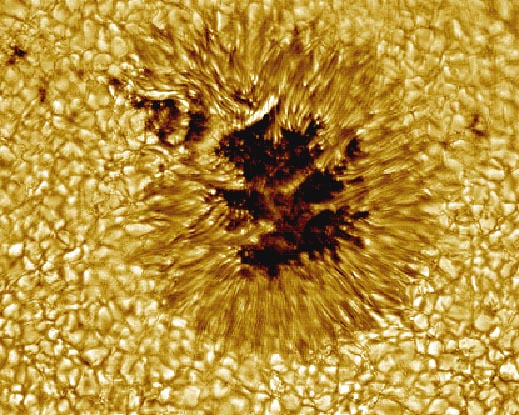A Sunspot Up Close

Explanation:
Sometimes, small regions of the Sun appear unusually dark.
Visible above is a close-up picture of a
sunspot, a depression on the Sun's face that is slightly
cooler and less luminous than the rest of the
Sun. The Sun's complex
magnetic field creates this cool region
by inhibiting hot material from entering the
spot.
Sunspots can be larger than the Earth and
typically last for only a few days.
This high-resolution picture also shows clearly that the
Sun's face is a bubbling sea of separate cells of hot gas.
These cells are known as
granules. A
solar granule is about 1000
kilometers across and lasts about 10 minutes. After that, many
granules end up exploding.
Authors & editors:
Robert Nemiroff
(MTU) &
Jerry Bonnell
(USRA)
NASA Web Site Statements, Warnings,
and Disclaimers
NASA Official: Jay Norris.
Specific
rights apply.
A service of:
LHEA at
NASA /
GSFC
& Michigan Tech. U.

